|
|
|
|
#1 |
 Join Date: Mar 2007
Location: Crystal Lake, IL
Posts: 7,180
|
Some people have asked about port matching the heads to the intake....obvious solution is the taper the IH runner, but if you plan on port matching in the future, you might go ahead and open it up to 36mm from the get go.....
if so this is what a 36+MM IH look like when mated to a stock head...to me its not that bad...not optimal; but I am guessing you are still picking up over a tapered runner: 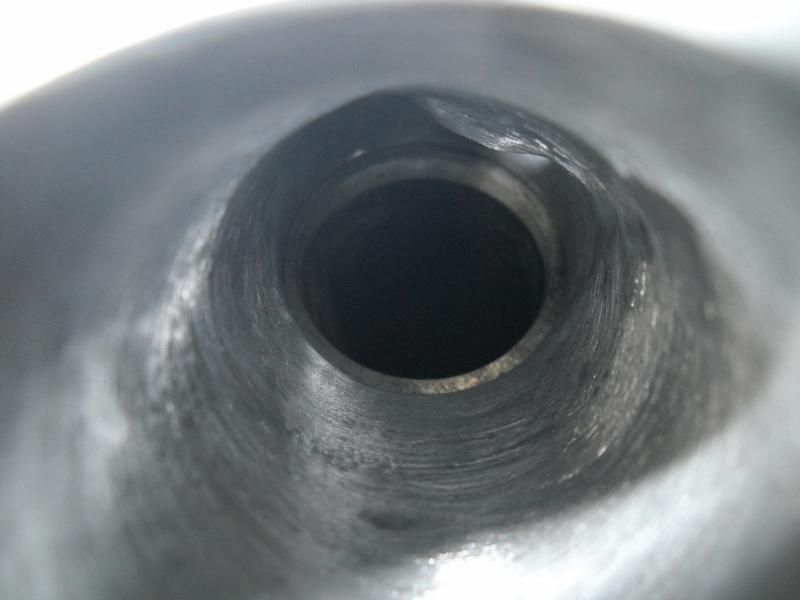
__________________
LGAFF 90 #966-150K miles-sold 92 #234-sold 1987 Callaway TT #17 1991 ZR-1 #1359 |
|
|

|
|
|
#2 |
 Join Date: Mar 2007
Location: Crystal Lake, IL
Posts: 7,180
|
__________________
LGAFF 90 #966-150K miles-sold 92 #234-sold 1987 Callaway TT #17 1991 ZR-1 #1359 |
|
|

|
|
|
#3 |
|
Join Date: Dec 2012
Location: NC
Posts: 1,783
|
Don't know much about airflow dynamics, but I do know ALL the good questions ...
With such a difference in bore from IH to head, is it possible that instead of a smooth taper, from IH to head, that you induce vortices in the air column, which would accommodate better flow? Such as with angular FURROWS. Like the Coriolis Effect - Think of the how the juice and chunky jam goes away through a SMALLER hole, when you pull the trigger in the 'library' every morning. Or how the water drains in the sink even. It DOES want to spiral out to accommodate the restriction... ( I think GM even tried to mimic this with their VORTEC induction ) Perhaps 'furrowing' at the juncture, that could later be opened for full matching? Or perhaps 'dimpling' in the juncture (think of a golf ball aerodyne). If furrowing, would there be the appropriate angle in the column? That would be determined by differences in bore of each player? EDIT: Or determined by bore difference x some linear gradient ( = angle / length of furrows). I think airflow through the juncture AS IS, would have some nasty eddies fighting against the flow...? Anything that would maintain some semblance of lamination in the flow. Definitely intriguing. I come up with good stuff huh! Still thinkin' on this too here... Last edited by Schrade; 03-23-2014 at 01:27 AM. |
|
|

|
|
|
#4 |
|
Join Date: Dec 2012
Location: NC
Posts: 1,783
|
Furrowing. (which could be leveled when full porting is done).
In fact, when full head port matching is done, would SOME degree of angular furrowing STILL be in order? I asked long ago here, if the injector bosses were specifically designed, with flow dynamics in mind - Dunn's or Burmal's mind, that is??? HMMMmmmmmmm.......................... Last edited by Schrade; 03-22-2014 at 11:38 PM. |
|
|

|
|
|
#5 |
 Join Date: Nov 2007
Location: Squires (near Ava MO in the Mark Twain N'tl Forest) - Missouri
Posts: 6,466
|
Quote:
So, some (any transition) tapering is better than none. Multiple sources on the topic of porting seem to focus on 4º (approx 14.3:1) taper (or less) is required to avoid the practical issues of reversion and restriction. Going from 36mm to 32.5 mm (at the valve guide boss of my 90 heads) at 4º is ≈ 2". However, it is 2.85" from the IH to the valve guide boss (again on my 90). So, I went the whole 2.85" just for a bit more thickness to avoid a coolant/oil incursion problems as I did my (initial plenum/IH only) head port matching with the heads in place. 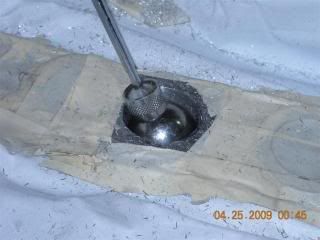 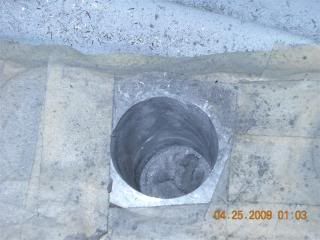 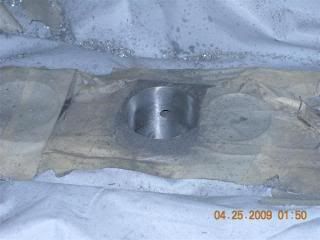 Wow! I wish I had dyno'ed the result then so I'd have a clearer picture of what the net gain was after I later finished the head porting. But the "ol' seat of the pants" gauge said the lion's share of the net 432 rwhp came from the top end alone. As you know, the head material is easier to cut than the IH. So, it took under 2 hours per hole to do the initial head runners. (BTW, I pulled the secondaries at that time and applied the same taper to all the head runners while I had the IHs off). And, an added benefit was to reduce the amount of cutting when I later finished porting the heads; eventual full porting was considered too when I initially tapered the head port match. |
|
|

|
|
|
#6 | |
 Join Date: Nov 2007
Location: Squires (near Ava MO in the Mark Twain N'tl Forest) - Missouri
Posts: 6,466
|
Quote:
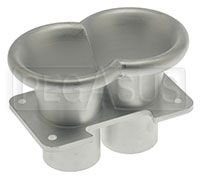 As for the OE injector bosses, they're massive bastards! Removing them as much as possible (see Lees' pic) is part of the increased flow the stock LT5 craves so much! Last edited by Paul Workman; 03-23-2014 at 12:11 PM. |
|
|
|

|
|
|
#7 |
 Join Date: Mar 2007
Location: Crystal Lake, IL
Posts: 7,180
|
A 90 I did last year was 36mm, not port matched and it picked up 37hp on the same dyno....so no real ill effects...
And that was without a tune
__________________
LGAFF 90 #966-150K miles-sold 92 #234-sold 1987 Callaway TT #17 1991 ZR-1 #1359 Last edited by LGAFF; 03-23-2014 at 12:12 PM. |
|
|

|
|
|
#8 |
|
Join Date: Dec 2012
Location: NC
Posts: 1,783
|
Quote:
If he DOESN'T taper the head port inlets, then his laminar flow STOPS at the head inlet ridge - doesn't it? |
|
|

|
|
|
#9 |
 Join Date: Feb 2011
Location: San Marcos CA
Posts: 1,786
|
I ported mine before I had headers and I think it was only good for 20 rwhp or so and about the same torque as a stock car with a cat-back. This was all over 5000 rpm so really not the big seat-of-the-pants kick like you wish all mods had, but still, it seemed to run better on the freeway than it previously did. I did port down into the heads on the primary to smooth out the ridge and port mismatch.
I think Paul's experience with the porting gain was because he already had headers and supporting mods when he went with a full aggressive porting and secondary removal...So probably there was a nice big step that he could feel. now to finish this story, I finally got long tube headers (2" primaries) and a proper x-pipe on the cat-back and boy oh boy did that wake it up! Was it because the headers help the mid range torque (they do-and you feel it), or was it because the top end porting done the previous year was finally able to contribute to the big gain because the bottle neck in the exhaust was finally taken car of? Probably in my case the top end port helped the header mod to feel so significant. One might also mention that if you kind of do mods in incremental steps, you get used to the power and it isn't the same as spending all the money at once and getting a 100hp gain. I gave a ride in my car to a guy with a stocker and he said he thought it really pulled massively and wants to mod similarly. Probably time to get back to the dyno if I don't end up selling the car first. Last edited by mike100; 03-24-2014 at 11:59 AM. |
|
|

|
|
|
#10 |
 Join Date: Feb 2011
Location: San Marcos CA
Posts: 1,786
|
No reason to make the task difficult. Just mark the port circle with the gasket, test fit the IH, and grind it. All the time was spent masking it off, stuffing oil soaked towels in the port, vacuuming and making sure the valve was closed on the port being worked on (turned engine with tool on crankshaft).
 I didn't go the full 36MM, so I didn't have to taper 2" down. This hole took 10-15 minutes to do, it was the extra prep that takes the time. I did all 8 in about 5-6 hours. 
|
|
|

|
 |
|
|